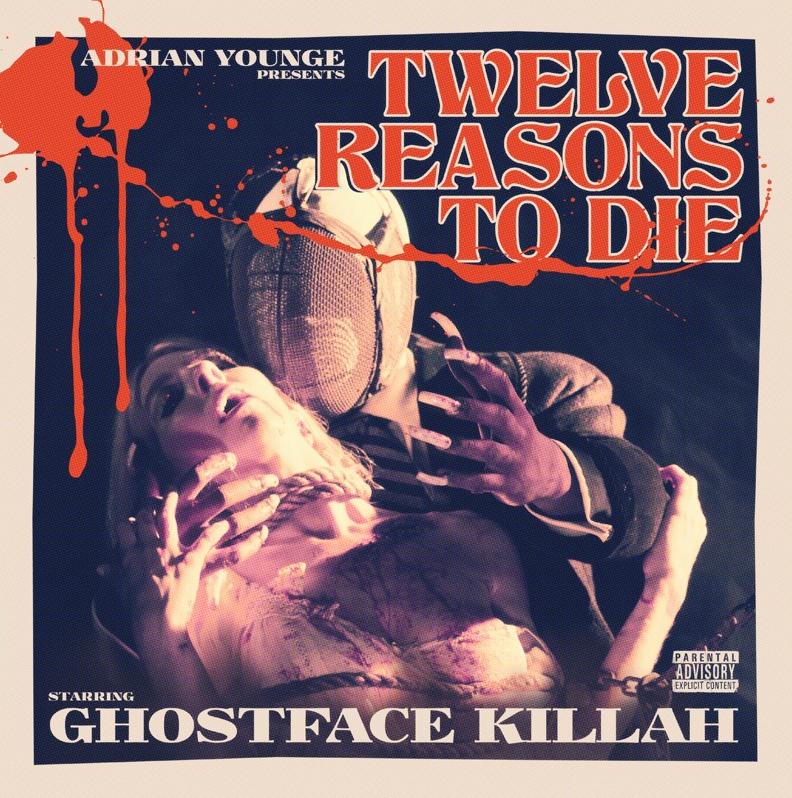 Joshua Lerner is mighty healthy.
Joshua Lerner is mighty healthy.
Shit moves quickly on Twelve Reasons to Die. When “An Unexpected Call (The Set Up)” begins, our hero Pretty Tony is knocked out by men in the backseat of his girlfriend’s car. One line later, he wakes up in a “melting pot” in the DeLuca family compound. By the end of the verse, Tony’s body has been liquefied and his remains pressed into twelve vinyl records.
This is the exact midpoint of the album, a twelve-song set that has the narrative arc of a roadhouse flick. The fact that Twelve Reasons to Die is, in essence, a movie, should come as no surprise. Producer Adrian Younge, promotes himself as a maker of audio cinema. “I create worlds,” he declares in interviews. Younge’s Black Dynamite from 2009 is a parody of Blaxploitation-era soundtracks. And this year’s collaboration with William Hart was an attempt to recreate the world of the Delfonics, albeit with a singer whose voice has grown disarmingly warbled with age.
So what’s up with this new Ghostface movie, and why is Ghost’s body being turned into records and shit? We find out early that the DeLuca family took Tony Starks as a young man. But Starks quickly rose through their Mafioso ranks. As an outsider in an Italian family, he decides to sever ties with the DeLucas and form his own syndicate, the Black Suits. “I Declare War” is a stand-alone story of Tony’s split. He rhymes: “The DeLucas tried to front on my skin tone/ I left the fam to start a fam of my own/ the Black Italiano, big pinky rings from Sicily/ I move like the Don of the fam, it’s officially/ wartime…”
Even by itself, the coming-of-age narrative of Tony Starks as “Black Italiano” could have provided enough juice for an entire album. But Younge and Ghost keep things moving. Two tracks later, Starks lets down his guard when he falls in love with the daughter of a DeLuca boss. He ends up in the car, then in the hot sauce, and then he’s some records. The second half of the album is pure Killer Bee swarm, as Starks transmutes into his new persona as the Ghostface Killah, a spirit who rises from the records’ grooves to inflict vengeance on every last member of his former family.
When I first heard about the concept behind this album, I was excited by the novelty of its violent resolution. I guess I could have expected that the mystique behind this supernatural finale would be far more compelling in theory than in action. The truth is that the album’s final tracks are not much more than a laundry list of execution techniques. No doubt, the Killah’s portfolio is diverse. He gets suicide bombers on board DeLuca airplanes; he also throws a DeLuca kid out of an airplane. But in the end, these tactics are just beefed-up reincarnations of the “Method Man” skit from ’93.
What’s far more interesting about Twelve Reasons to Die is the gravitas that Younge and Ghostface Killah inject into the narrative’s first half, from the beginning of Starks’ ascent until the moment of his tragic betrayal. I could go on, for example, about the one-two punch of “Center of Attraction” and “Enemies All Around Me,” which have the trappings of a Shakespeare tragedy. After a song and a half of surprisingly heartfelt declarations of love, it’s clear to everyone but Starks that he’s being set up. The “Best Supporting Actor” trophy should go to Cappadonna, whose voice falters as he pleads with Starks to see the truth about the DeLuca girl just as the final trap has been laid.
The successful execution of this story owes a lot to Younge’s fascination with movie soundtracks—specifically those of Ennio Morricone—as well as his ability to produce soundscapes that appear simultaneously rooted in time and timeless. These songs are evocative of scratchy late-60s basement soul. They’re not cut up breakbeats. They’re a recreation of the original thing, combined with a whirling organ and punchy horns. They are pastiche, a kind of kitsch; but kitsch works when you’re pretty much listening to a B-movie on wax.
At the same time, the sound that Younge achieves on this record is so warm and inviting, and so consistently implemented on every track, that Twelve Reasons to Die ends up sounding like a “classic” upon first listen. It is so untethered from the sounds of 2013 that it will sound fresh when spun many years from today. This timelessness is perhaps the album’s most important achievement. In the age of the Hollywood reboot, Ghostface Killah has created an origin myth that allows him, for the first time in his career, to fully own his ghastly persona. It’s been twenty years of coming attractions. Now we know how the Killah was born.
Stream:

